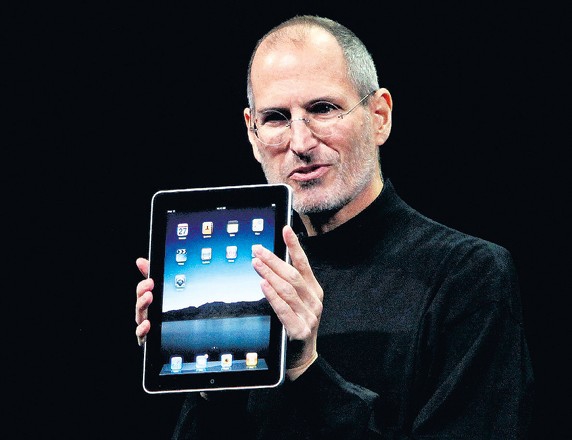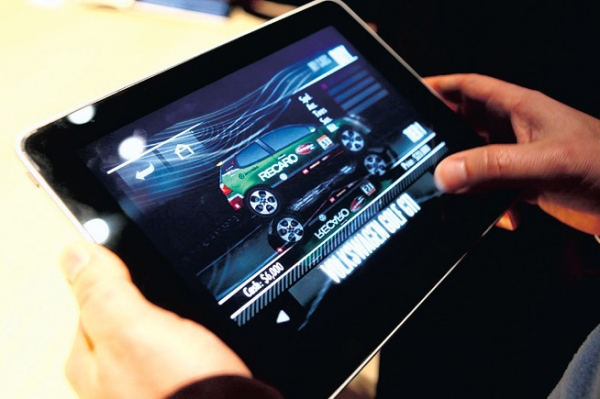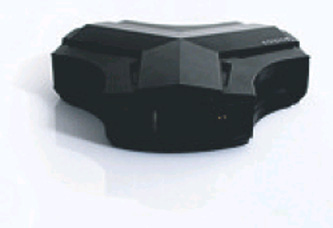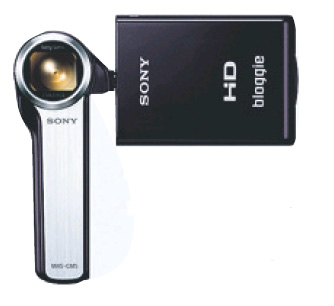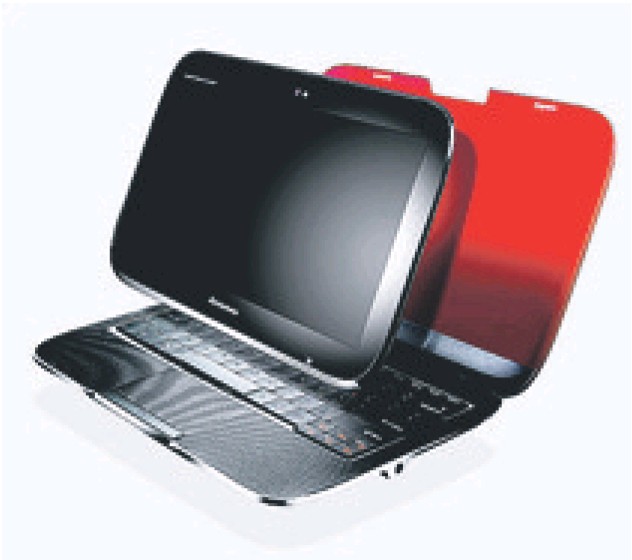Vancouver online gurus share tips in new books
Gillian Shaw
Sun

Social media mavens and authors (clockwise from lower left): Steve Jagger, Rebecca Bollwitt, Tris Hussey, Darren Barefoot, Julie Szabo and Shane Gibson gather at a Yaletown coffee shop. Photograph by: Ian Lindsay, PNG, Vancouver Sun
Vancouver is backing its growing reputation as a centre of excellence for social media by kicking off the new year with a bonanza of new books on the topic by local authors.
The bookapalooza offers an excellent social media primer, covering everything from creating a blog to saving yourself and your company from the most egregious socmed missteps.
Here’s a snapshot of the books:
Create Your Own Blog: 6 Easy Projects to Start Blogging Like a Pro
Written by Tris Hussey — a self-confessed science geek who once ran a lab at Duke University and has since turned his attention to blogging, teaching and photography — this is a chatty and informative guide that is a perfect anecdote to a blogging phobia. I met Hussey, a charter member of the Professional Bloggers Association, through social media networks and soon learned– from our e-chats and meeting in real life — that he’s quick to offer help and great at translating tech garble for the less technically inclined.
It can be a challenge for geeks to deliver information at a level that the newcomer can understand, but with Create Your Own Blog, Hussey has delivered a template that makes sense, even if you can hardly set up your own Twitter account.
Hussey is a fan of WordPress, which is available as a free hosted online blogging service at wordpress.comand as wordpress.org,where you can download the files you need to install a WordPress blog on your own server. But he talks about other options and his instructions are applicable to different blogging platforms.
By the time you reach the end of Chapter 2, installing and setting up your first blog, you’ll be online and ready to take on the next challenge, which is figuring out your writing voice and how you are going to build a conversation and your online community. Good tips and advice include how to avoid bad domain names (like the Italian Power Generator, powergenitalia.com),how to pick a blog theme, how to avoid copyright infringement and many other issues that come up for beginner bloggers.
I had a one-line contribution to this book with Hussey quoting me from a speech in which I suggested, “Don’t put something online that you don’t want to see it printed on the front page of the paper.”
From there, Hussey goes on to the more advanced lessons, like video blogging, business blogging and others, including the question many ask: How to make money through your blog.
The book is laid out with highlighted tips and definitions, so it makes a great blogging textbook — not surprising coming from one who is an excellent teacher.
www.sixbloggingprojects.com
Sociable!
Some time ago when I was interviewing Stephen Jagger for a story on businesses using social media, the Vancouver entrepreneur and cofounder of Combustion Labs Media, which operates the popular real estate software company Ubertor.com,laughed when I told him my Twitter account was protected from new followers because I worried who else besides my family would care to read my 140-character ramblings.
“You write for hundreds of thousands of people every day and you’re worried about what people will think reading your tweets,” he said.
Good point. And delivered in Jagger’s joking kind of way, that is more encouraging than critical.
It’s a mentoring trait he has carried out in the new book he co-authored with Shane Gibson, a Vancouver entrepreneur, speaker and sales performance specialist. The pair walks the talk in the book, which they created by recording their conversations and discussions, sending the recordings overseas to be transcribed and editing the transcript into Sociable! Working mostly out of downtown coffee shops, they had the book published through Amazon.
Illustrated with some very funny cartoons by Vancouver’s Rob Cottingham of the social media marketing firm Social Signal, it is a rapid-fire read that comes across like you’re sitting in Blenz with Jagger and Gibson.
While I don’t quite agree that with their “old media is dying” as one argument for engaging in social media, they are right in their assessment that new channels are opening up and companies must learn to be comfortable with them or they risk being left behind in the digital rush.
Consumers and businesses are engaging across multiple platforms and you must be ready to meet your readers, your clients and your customers where they are.
While Jagger and Gibson are master networkers, they understand the importance of creating and engaging in online communities, not seeing them merely as a sales channel. Their book should be required reading for the business person who leaps onto social networks, blasting out, “Buy my product,” messages that do nothing but ensure they’ll be regarded as online pariahs.
Their No. 1 rule is to stop pitching and start connecting. “Not unlike someone trying to sell insurance at a dinner party, many will shun the social media marketer that solely talks about their product and does not add value. … If you are there for the short transaction, you are going to be on peoples’ blacklist very, very quickly.”
www.sociablebook.com
Friends With Benefits
For those of you who thought social media might be a little dull, Julie Szabo and Darren Barefoot, co-founders
of Vancouver’s Capulet Communications, are spicing it up with this tell-all book. A followup to their earlier book, Getting to First Base: A Social Media Marketing Playbook, Friends will prove lucrative for readers, not lurid for its delivery of a comprehensive guide to an often bewildering and growing area.
Shel Israel, author of Twitterville, compares Friends to The Boy Scouts Handbook of his youth, a useful guide that teaches preparedness, ethical behaviour and “useful how-to stuff on a whole lot of subjects related to social media in business.”
It starts off with strategy and once you’ve read those first eight chapters, you’ll be ready to move on to the last four chapters, which take a look at the tools of the trade and how to use them.
This is a book that shouldn’t only be read by the front-line workers; it needs to be on the boardroom bookshelf. For the decision-makers in a company, what they don’t know about social media can hurt them and their brand.
It can also turn traditional crisis management on its head, as Szabo and Barefoot point out in their chapter “Damage control in the digital age.”
“As well as hastening the blow, the Web amplifies a crisis because everyone seems to be getting in on the action,” they write.
They even share their own story of blogger backlash, when a pitch they were making for a company drew the ire of a blogger who lambasted them in a post that remained on the first pages of a Google search for their company for months to come.
Barefoot and Szabo draw on case studies to emphasize their points and include Q and A sessions with some online influencers like ReadWrite-Web’s Marshall Kirkpatrick on how to make a successful pitch.
Among their lessons: be honest, don’t fib. If you don’t know what astroturfing and sockpuppeting refer to, maybe read up on it before someone in your company makes those mistakes. Barefoot and Szabo explain them — the first referring to faking grassroots support, while sockpuppeting is creating fake web profiles to promote or advocate for a company or organization.
“Exposed examples of astroturfing are legion,” they write. “In 2006, science journalist Antonio Regalado exposed a YouTube video critical of Al Gore as being product by DCI Group, a public relations firm with Exxon-Mobil and General Motors on its client list.”
capulet.com/friendswithbenefits
Blogging to Drive Business: Create and Maintain Valuable Customer Connections
Vancouver blogger Rebecca Bollwitt, known online as Miss 604, has teamed up with Eric Butow, who runs web design and e-marketing firm Butow Communications Group, to write this business blogging primer.
Along with advice on launching a blog, it deals with the broader questions of online strategy and why and how blogs can fit into a business plan.
It includes a number of case studies, from Molson Coors Brewing Co. to the Canucks, using the challenges and successes of companies that use blogging and social media to explain best practices.
A bigger picture look than Hussey’s book on blogging, it deals with such issues as who should write your company’s blog and how blogging fits into an overall marketing strategy.
“Blogs are not a panacea for your business challenges,” Bollwitt and Butow write. “You can’t just post a message saying ‘Hello, world!’ or something to that effect on your blog and expect people to come beating down your door.
“Your blog should complement your other marketing tools to help drive business.”
While a lot of companies, as you’ll be able to read about in the book, have successfully launched blogs, others are still questioning their value and debating whether or not they should join in.
Bollwitt and Butow answer those questions and more. bloggingtodrivebusiness.com
© Copyright (c) The Vancouver Sun
